- Home
- Quizzes
- My Quiz Activity
- Newsletters
- Sports Betting
- MY FAVORITES
- Add Sports/Teams
- SPORTS
-
NFL
- NFL Home
- Arizona Cardinals
- Atlanta Falcons
- Baltimore Ravens
- Buffalo Bills
- Carolina Panthers
- Chicago Bears
- Cincinnati Bengals
- Cleveland Browns
- Dallas Cowboys
- Denver Broncos
- Detroit Lions
- Green Bay Packers
- Houston Texans
- Indianapolis Colts
- Jacksonville Jaguars
- Kansas City Chiefs
- Las Vegas Raiders
- Los Angeles Chargers
- Los Angeles Rams
- Miami Dolphins
- Minnesota Vikings
- New England Patriots
- New Orleans Saints
- New York Jets
- New York Giants
- Philadelphia Eagles
- Pittsburgh Steelers
- San Francisco 49ers
- Seattle Seahawks
- Tampa Bay Buccaneers
- Tennessee Titans
- Washington Commanders
-
MLB
- MLB Home
- Arizona Diamondbacks
- Atlanta Braves
- Baltimore Orioles
- Boston Red Sox
- Chicago White Sox
- Chicago Cubs
- Cincinnati Reds
- Cleveland Guardians
- Colorado Rockies
- Detroit Tigers
- Houston Astros
- Kansas City Royals
- Los Angeles Angels
- Los Angeles Dodgers
- Miami Marlins
- Milwaukee Brewers
- Minnesota Twins
- New York Yankees
- New York Mets
- Oakland Athletics
- Philadelphia Phillies
- Pittsburgh Pirates
- San Diego Padres
- San Francisco Giants
- Seattle Mariners
- St. Louis Cardinals
- Tampa Bay Rays
- Texas Rangers
- Toronto Blue Jays
- Washington Nationals
-
NBA
- NBA Home
- Atlanta Hawks
- Boston Celtics
- Brooklyn Nets
- Charlotte Hornets
- Chicago Bulls
- Cleveland Cavaliers
- Dallas Mavericks
- Denver Nuggets
- Detroit Pistons
- Golden State Warriors
- Houston Rockets
- Indiana Pacers
- Los Angeles Clippers
- Los Angeles Lakers
- Memphis Grizzlies
- Miami Heat
- Milwaukee Bucks
- Minnesota Timberwolves
- New Orleans Pelicans
- New York Knicks
- Oklahoma City Thunder
- Orlando Magic
- Philadelphia 76ers
- Phoenix Suns
- Portland Trail Blazers
- Sacramento Kings
- San Antonio Spurs
- Toronto Raptors
- Utah Jazz
- Washington Wizards
-
NHL
- NHL Home
- Anaheim Ducks
- Arizona Coyotes
- Boston Bruins
- Buffalo Sabres
- Calgary Flames
- Carolina Hurricanes
- Chicago Blackhawks
- Colorado Avalanche
- Columbus Blue Jackets
- Dallas Stars
- Detroit Red Wings
- Edmonton Oilers
- Florida Panthers
- Los Angeles Kings
- Minnesota Wild
- Montreal Canadiens
- Nashville Predators
- New Jersey Devils
- New York Islanders
- New York Rangers
- Ottawa Senators
- Philadelphia Flyers
- Pittsburgh Penguins
- San Jose Sharks
- Seattle Kraken
- St. Louis Blues
- Tampa Bay Lightning
- Toronto Maple Leafs
- Vancouver Canucks
- Vegas Golden Knights
- Washington Capitals
- Winnipeg Jets
- NCAAF
- NCAAM
- Boxing
- Entertainment
- Lifestyle
- Golf
- MMA
- Soccer
- Tennis
- Wrestling
- More Sports
- RESOURCES
- My Account
- YB on Facebook
- YB on Twitter
- YB on Flipboard
- Contact Us
- Privacy Policy
- Terms of Service
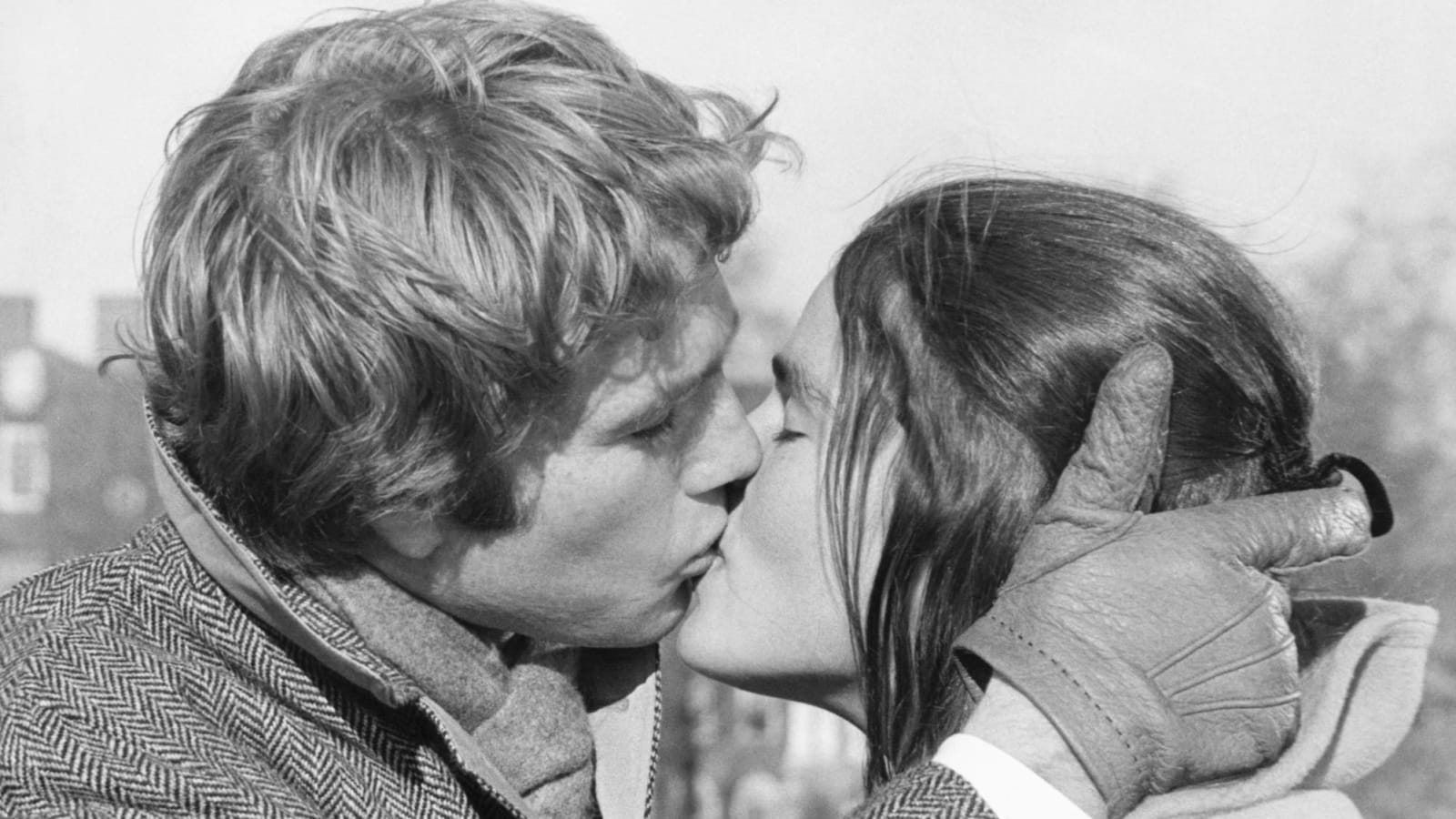
Movies turning 50 in 2020 that everyone should see
Fifty years ago, the world was engulfed in turmoil. The Vietnam War was escalating. The Cold War between the U.S. and the U.S.S.R. was getting colder. The Beatles broke up. It was an uncertain time, but the arts offered a glimmer of creative hope. It was an especially fertile period for filmmaking. The New Hollywood revolution was in its second year, and world cinema was exploding thanks to daring new works from France, Italy, England, Poland, Czechoslovakia and elsewhere. The ensuing 10 years would be the best run of movies in the history of motion pictures. If you want to understand how we got to "The Godfather," "The Exorcist," "Taxi Driver," "Star Wars" and "Apocalypse Now," these 50 films are a handy road map.
"M*A*S*H"
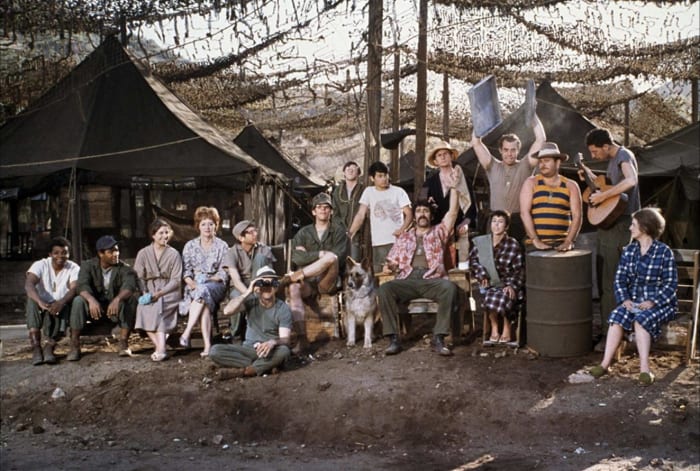
Robert Altman’s uproarious Korean War comedy was a box office smash that earned counterculture cred for its irreverent treatment of combat during the height of the Vietnam War. For those who’ve only seen the long-running TV show, you’re going to be shocked by the film’s raunchiness, surgical gore and rough treatment of company killjoy, Margaret Houlihan (Sally Kellerman). There’s also a running gag involving Fred Williamson that hasn’t aged particularly well (though Altman and screenwriter Ring Lardner, Jr. make sure his character is in on the joke). But the film has lost none of its antiwar power over the last 50 years.
"Love Story"

The top grossing movie of 1970 is one of the most overwrought romantic dramas ever made, but you’d have to be made of stone to make it through this adaptation of Erich Segal’s bestselling novel without shedding at least a few tears. Ryan O’Neal and Ali MacGraw make for an appealing couple, but the film connects most forcibly via Francis Lai’s aggressively mawkish score. “Love Story” isn’t subtle, but neither is young love. Avoid the hilariously insensitive sequel, "Oliver's Story", at all costs.
"Patton"
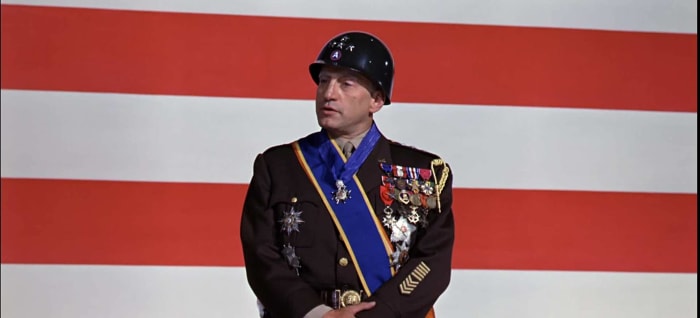
Franklin J. Schaffner’s biopic of Gen. George S. Patton gets off to an audacious start with George C. Scott standing in front of a massive U.S. flag and delivering a rousing speech to his troops. From there, we’re plunged into a lavishly produced, if fairly straightforward account of Patton’s tumultuous tenure as a commander of various Army corps during World War II. Francis Ford Coppola’s screenplay gives Scott no shortage of red meat to chew, which earned the volatile actor a Best Actor Oscar (which he did not accept).
"Airport"

The 1970s disaster film craze got kicked off with this star-studded adaptation of Arthur Hailey’s bestselling novel. Burt Lancaster! Dean Martin! Jacqueline Bisset! Jean Seberg! Helen Hayes! It’s impossible to watch the film with a straight face after “Airplane!," but you can certainly see how audiences of the era might’ve been smitten with its old-fashioned, cornball charm. Three increasingly ridiculous sequels followed, as did disasterpieces like “The Towering Inferno," “The Poseidon Adventure” and “Earthquake."
"Woodstock"

Given the horrible weather conditions and bad acid, Michael Wadleigh’s documentary of the 1969 Woodstock music festival is actually a much better experience than being there. An ambitious undertaking that required the work of six editors (including Martin Scorsese and Thelma Schoonmaker), Wadleigh’s film is, along with “Gimme Shelter," the definitive account of the late 1960s counterculture: the Peace-Love-Dope ethos is in full flower - and starting to reek of empty posturing (which, for most of these attendees and hippies in general, it was). Along the way, you get to see some iconic performances from Richie Havens, Country Joe and the Fish and, of course, Jimi Hendrix.
"Tora! Tora! Tora!"
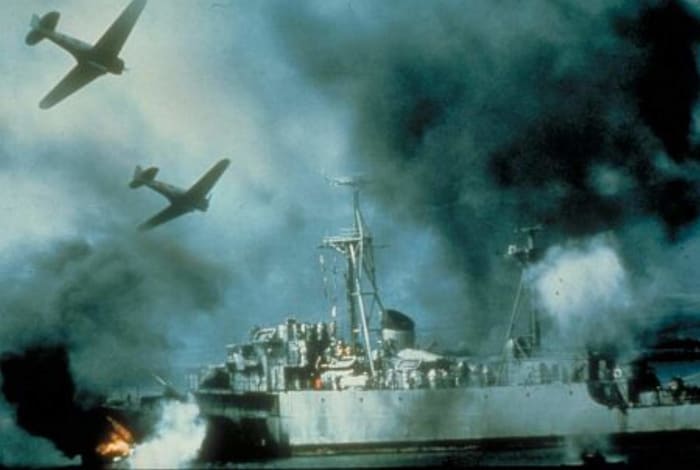
Long before the advent of CGI, if studios wanted to make an epic war movie, they had to use actual airplanes and full-scale mockups of aircraft carriers. For this reason alone, “Tora! Tora! Tora!," a painstaking recreation of the Japanese assault on Pearl Harbor, is well worth watching. The film is told from both an American and Japanese perspective – the former directed by Richard Fleischer and the latter a team effort by Toshio Masuda and Kinji Fukasaku (these two replaced an overwhelmed Akira Kurosawa early in production). It’s not the most compelling war film you’ll ever see, but the scope of the production is remarkable. They cannot make 'em like this anymore!
"Little Big Man"

Arthur Penn’s irreverent Western allows Dustin Hoffman to show off as a 121-year-old man who recounts his larger than life exploits in the American West to a historian. Hoffman plays Jack Crabb at a variety of ages as he is raised by Cheyennes, becomes a gunslinger, joins up with Gen. Custer and leads his troops into the ambush at Little Bighorn. Is Crabb shining this historian on, or is he telling the truth? The latter seems unlikely, but the tales are told with such brio that you want to believe them.
"Rider on the Rain"

This sui generis thriller from René Clément opens with a young woman named Mellie (Marlène Jobert) being stalked by a strange man. He tracks her down to her house and rapes her. When Mellie comes to, she realizes he is still in the house and she shoots him. Rather than report the attack and clear act of self-defense, she disposes of the body. Then Charles Bronson shows up, and a bizarre cat-and-mouse game - with loads of "Alice in Wonderland" references - ensues. The less you know about this film going in, the better. Rest assured this is not "Death Wish", or anywhere near that ballpark.
"Five Easy Pieces"

Bob Rafelson’s film about a classically trained piano prodigy (Jack Nicholson) bumming around as an oil rig worker is a quintessential piece of New Hollywood cinema. You’re probably familiar with the infamous chicken salad sandwich scene (“I want you to hold it between your knees”), but Carole Eastman’s screenplay doesn’t celebrate Nicholson’s brattish behavior. It’s a portrait of a genius who never wanted the life he was being groomed to live. It’s a mesmerizing journey of nonconformity.
"Investigation of a Citizen Above Suspicion"

Elio Petri’s darkly comedic thriller won that year’s Oscar for Best Foreign Language Film, and the tale of a powerful police inspector (Gian Maria Volonté) who murders his mistress and gradually discovers his high-ranking position has placed him above the law. Though it possesses the contours of a vintage giallo, the procedural elements are subverted at every turn; there’s no chance of Volonté facing the music for his crime, so innocent people with something to hide (e.g. a gay husband, a student radical) become prime suspects instead. It’s especially chilling in our current climate. It also features one of Ennio Morricone’s finest scores.
"Let It Be"

Or “The Death of The Beatles." Michael Lindsay-Hogg’s documentary about the recording of the band’s final LP features an overbearing Paul McCartney, a checked-out John Lennon, a miserable George Harrison and a keeping-his-head-down Ringo Starr. Only one significant dust-up — Harrison getting fed up with McCartney’s heavy-handed steering of the “I’ve Got a Feeling” recording — made the final cut, but you can sense the tension in every scene. Though they were still capable of making beautiful music together, these guys were positively sick of each other. It’s a depressing film but essential for fans of The Beatles.
"Maidstone"

One of the most self-indulgent movies ever made, Norman Mailer’s “Maidstone” is a total failure as a narrative feature but frequently spellbinding for its bizarre tangents. The most famous moment in the film finds Mailer and Rip Torn (playing Mailer’s character’s brother) improvising a fight scene; when Torn wallops Mailer over the head with a real hammer, drawing very real blood, the fracas turns deadly serious (to the extent that both actors call each other by their actual names). It’s a flipped-out chunk of experimental cinema that anticipates the madness of the decade to come (and Mailer's descent into self-parody).
"Alex in Wonderland"

For the follow-up to his hit spouse-swapping comedy, “Bob & Carol & Ted & Alice," writer-director Paul Mazursky took a page out of Federico Fellini’s book and made a movie about the difficulties of completing his next movie. Donald Sutherland brings the same mischievous glee to his portrayal of Mazursky’s surrogate as he did to Hawkeye Pierce in “M*A*S*H," which keeps the film anchored during its more outlandish passages. It’s nowhere near as visually astounding as Fellini’s “8 1/2”, but it’s lively and inventive in its way. Mazursky's '70s run of movies is woefully underrated.
"The Ballad of Cable Hogue"

Sam Peckinpah threw audiences a tonal curveball with this uncharacteristically sentimental tale of an Old West prospector who lucks his way into a profitable waterhole catering to stagecoach travelers in between towns. As a comedic Western musical, it succeeds where “Paint Your Wagon” failed. Jason Robards is magnificently surly in the title role, while Peckinpah’s company of ornery character actors (Slim Pickens, Strother Martin and L.Q. Jones) fit right in. There’s only a smattering of violence and a little tawdry interplay between Cable and a prostitute named Hildy (Stella Stevens), making this a Peckinpah film you could comfortably show to your children!
"Bed and Board"

The penultimate entry in François Truffaut’s Antoine Doinel series finds our protagonist unhappily married and expecting his first child with his wife, Christine (Claude Jade). Whereas the previous installment, “Stolen Kisses," had a bittersweet quality, this film seriously tests our tolerance for Doinel’s selfish, immature behavior. But we’ve watched Jean-Pierre Léaud grow up in this character and hold out hope that the young man will get his act together. Truffaut rewards our connection to the character with an upbeat resolution that feels wholly earned.
"The Bird with the Crystal Plumage"

Dario Argento’s directorial debut remains one of the horror maestro’s finest efforts. The film opens with an expertly staged sequence in which Tony Musante, playing an American writer on vacation in Rome, witnesses the attempted murder of a woman through the windowed storefront of an art gallery. The writer becomes obsessed with helping the authorities identify and catch the assailant. It’s a brilliantly creepy cat-and-mouse thriller that inspired dozens of giallos and made its filmmaker an international sensation.
"Beyond the Valley of the Dolls"

“This is my happening, and it freaks me out!” Russ Meyer’s utterly unhinged showbiz satire was one of many influences on Mike Myers’ “Austin Powers” series, but if you’re hoping for zany, shagadelic antics, beware: this is a wild, X-rated ride. John LaZar gives a legendarily crazed performance as svengali producer Ronnie “Z-Man” Barzell, who endeavors to turn an all-girl rock band, The Kelly Affair, into chart-topping sensations. The film was such an insane departure from Jacqueline Susann’s novel that the author sued 20th Century Fox for $10 million in damages. Roger Ebert co-wrote the screenplay with Meyer.
"Beneath the Planet of the Apes"
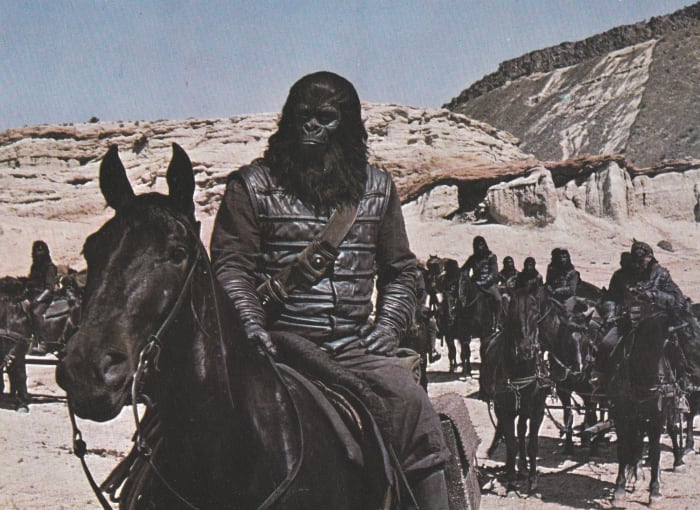
Don’t let the G-rating fool you: The first sequel to 1968’s “Planet of the Apes” is shockingly bleak! The film picks up right where the original left off, but quickly branches off from Charlton Heston’s Taylor to deal with the plight of a second crew of astronauts who’ve crash-landed in the Forbidden Zone. The film ramps up its anti-nuke message with the reveal of an undetonated nuclear bomb worshipped by a group of telepathic humans. The story’s a bit disjointed, but it comes together explosively in the third act.
"The Boys in the Band"

While many believe Mart Crowley’s drama about a group of gay men gathering for a friend’s birthday party hasn’t aged particularly well over the last half-century, there’s no doubting that its 1970 release was a watershed moment for queer cinema. William Friedkin does his best to liven up Crowley’s stagey adaptation of his play, which results in some jarring editing that doesn’t mesh well with the conventionally plotted material. But the actors play their parts with great sensitivity, and, if nothing else, you’re left feeling sorrow that these men had to conceal, at great cost to their mental well-being, who they were to fit in with straight society. The 2018 Broadway adaptation has been turned into a movie (starring Zachary Quinto, Matt Bomer and Jim Parsons) for Netflix, and will premiere on September 30th.
"Brewster McCloud"

Robert Altman quickly followed up the success of “M*A*S*H” with this cult classic about a flight-obsessed, Houston Astrodome-dwelling young man (Bud Cort) who may also be a serial killer whose calling card is covering his victims in bird excrement. Doran William Cannon’s absurdist screenplay shouldn’t work, but Altman’s stoner aesthetic invites us to sink into this richly imagined world and disregard the errant plotting. There are scattered allusions to “Bullitt," the work of Fellini and “The Wizard of Oz."
"The Butcher"

Claude Chabrol, one of France’s greatest and most prolific directors, caught fire in the late ‘60s with “Les Biches” and “La Femme infidèle” before kicking off the 1970s with this uniquely disturbing thriller about a strange relationship between a murderous butcher (Jean Yanne) and a sexually unavailable schoolteacher (Stéphane Audran). This might be Chabrol’s greatest work: the suspense as to when the teacher will realize her platonic companion is a killer is secondary to the question of why these two people are drawn to each other. Chabrol made a number of conventionally entertaining thrillers; this is not one of them.
"Catch-22"
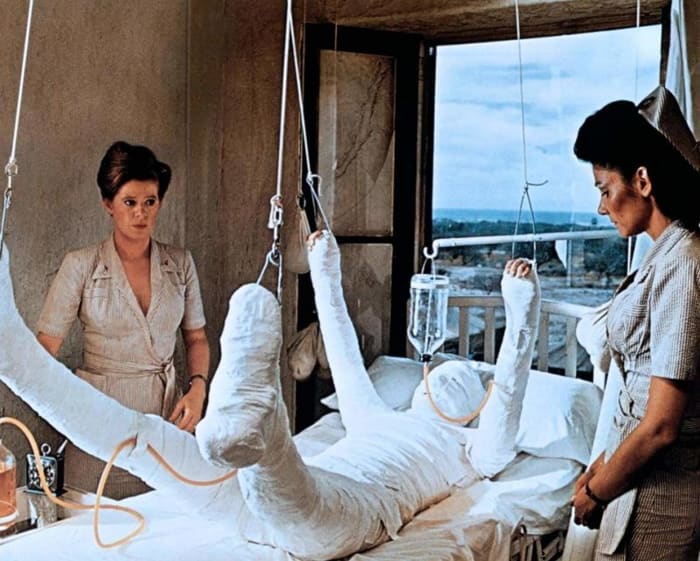
Director Mike Nichols and screenwriter Buck Henry couldn’t quite tame Joseph Heller’s unruly World War II satire. But once you make peace with the film’s built-in limitations, it works quite well as an absurdist antiwar film that, like “M*A*S*H”, uses the rigors of a previous conflict to comment on the then ongoing Vietnam War. Alan Arkin is spot-on as bombardier John Yossarian, but the real fun of the film is the star-studded supporting cast that includes Richard Benjamin, Norman Fell, Art Garfunkel, Bob Newhart and Orson Welles.
"Claire's Knee"

All of Éric Rohmer’s “Six Moral Tales” are essential viewing and should be viewed in order, but if for some silly hypothetical reason you could watch only one, this elegantly constructed story about a diplomat (Jean-Claude Brialy) who becomes obsessed with touching the knee of a teenage girl (Laurence de Monaghan) is one of the wisest films about desire you’ll ever see. It sounds creepy. It’s not. It’s also a master class in filmmaking technique. Every shot matters. Movies simply don’t get any better than this.
"Le Cercle Rouge"

All you need to know about Jean-Pierre Melville’s masterfully plotted crime film is that it’s a favorite of Hong Kong action guru, John Woo (just don't expect balletic, bullet-whizzing set pieces). It’s a classic jewel heist yarn with an exquisitely taut, silent robbery sequence that rivals (and pays homage to) the celebrated set piece in Jules Dassin’s “Rififi”, and a trio of top-notch performances from Alain Delon, Bourvil and Yves Montand. It’s a nifty variation on the “honor among thieves” theme that’s sure to leave you eager to check out more of Melville’s filmography.
"Colossus: The Forbin Project"

This might sound familiar: America’s computerized nuclear defense system becomes aware and seizes control from humankind via the threat of nuclear annihilation. “WarGames” and “The Terminator” franchise were clearly influenced by this confidently crafted sci-fi flick from steady-handed helmer Joseph Sargent (“The Taking Pelham One, Two, Three”) and screenwriter James Bridges (who went on to direct his own cautionary nuke tale with “The China Syndrome”). Given the myriad advancements in artificial intelligence, this movie is actually more terrifyingly plausible than it was 50 years ago. Watch it some night when you don't want to go to sleep.
"The Conformist"

Bernardo Bertolucci’s film about a Mussolini-era bureaucrat (Jean-Louis Trintignant) who accepts a mission to assassinate his anti-fascist mentor (Enzo Tarascio) is depressingly resonant at a time when people would rather go along to get along than act on their conscience. It’s also one of the most gorgeously shot movies of all time. Bertolucci’s expressionistic compositions and Vittorio Storaro’s vibrant cinematography need to be seen on the biggest screen in your home (or, if you’re lucky, a local repertory theater). It’s a feast for the eyes and the mind.
"Cotton Comes to Harlem"

One of the most important cinematic movements of the 1970s was the blaxploitation genre, which launched the careers of numerous African-American filmmakers and actors. It all started with Ossie Davis’ “Cotton Comes to Harlem," a raucous action-comedy based on Chester Himes’ pulp novel. Detectives Gravedigger Jones and Coffin Ed Johnson (played respectively by Godfrey Cambridge and Raymond St. Jacques) became cultural icons, while comedian Redd Foxx proved his party-record shtick could play and then some in a visual medium. (“Sanford and Son” would hit the airwaves two years later.)
"Deep End"

A unique coming-of-age film from one of our most underrated filmmakers, Jerzy Skolimowski’s “Deep End” is begging to be discovered by a new generation of cinephiles. John Moulder-Brown stars as a teenage dropout who takes a job at a British bathhouse. He is exposed to all manner of strange behavior and becomes obsessed with his flirtatious coworker (Jane Asher). Though the performances have an improvisational feel, Skolimowski’s mise-en-scène is stirringly precise, giving you a deep-tissue sense of its ‘70s time and place (particularly in a brilliantly staged club scene scored to Can’s “Mother Sky”).
"El Topo"

Alejandro Jodorowsky’s hugely influential peyote Western is best taken as a surrealistic riff/goof on Sergio Leone’s “Dollars Trilogy," though the film is so graphically violent and strewn with problematic sequences (there is a rape scene that, for a time, the director claimed was unsimulated) that it’s unlikely to grip today’s adventurous moviegoers as it did those of the 1970s. It’s historically significant as, allegedly, the first “midnight movie," and Jodorowsky’s command of the medium is such that you’re always engaged. You’ll know 10 minutes in if it’s for you or not.
"Equinox"

Jack Woods and Dennis Muren presaged the wave of tech-obsessed movie brats like George Lucas and James Cameron with this shoestring-budgeted horror movie about a quartet of kids who discover an ancient tome and accidentally summon an assortment of monsters. The stop-motion effects are impressive for the film’s $6,500 cost, and the story was obviously an influence on Sam Raimi’s “The Evil Dead." Muren went on to win nine visual f/x Oscars for classics like “The Empire Strikes Back," “Terminator 2” and “Jurassic Park." It’s a lark of a movie but inspiring in its ingenuity.
"Even Dwarfs Started Small"

Werner Herzog’s second feature concerns a group of imprisoned dwarfs who rebel against their inhumane dwarf warden and promptly run amok. For those who’ve fallen in love with Herzog’s carefully cultivated weirdo persona, be forewarned that this is a violent, hugely unpleasant film about rebellion gone wrong. It’s to Herzog’s credit that his casting of little people never feels exploitative or cruel, but the choice nevertheless heightens the movie’s nastiness.
"Gimme Shelter"

The 1969 Altamont Free Concert outside of San Francisco, California, was supposed to be the West Coast’s answer to Woodstock. Instead, it was a chaotic event marred by the thuggish antics of the event’s “security” detail, the Hells Angels, which culminated in the stabbing death of a young concertgoer. The descent into violence was captured in excruciating detail by documentarians Albert Maysles, David Maysles and Charlotte Zwerin. This is the dream of Woodstock dashed.
"The Great White Hope"

James Earl Jones reprised his Tony Award-winning role as defiant heavyweight boxing champion Jack Johnson in this Martin Ritt-directed adaptation of Howard Sackler’s play. Jones is astounding as the unbeatable pugilist who frustrates bigots with his arrogance, and Jane Alexander is every bit his equal as his illicit white mistress, Eleanor Bachman. The script is creaky and clichéd, but it’s a well-performed historical primer that gives younger viewers the opportunity to see Jones at his fiery best.
"Hi Mom!"
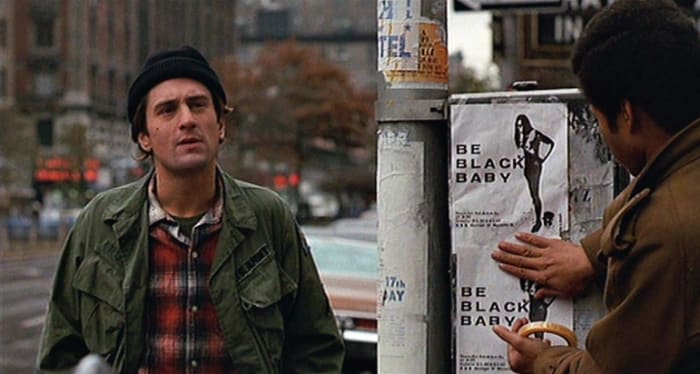
Before Brian De Palma made his mark as the new master of suspense with “Carrie” and “Dressed to Kill," he made a few counterculture-skewing satires that hold up very well today as mischievous documents of a turbulent time. The best of these is “Hi, Mom!," a sequel of sorts to “Greetings” that stars Robert De Niro as a voyeuristic adult filmmaker. The film is basically a collection of vignettes, the highlight being a guerrilla theater performance of “Be Black, Baby," in which white theatergoers are coated in blackface and terrorized by the African-American actors. It’s a searing, hand-held sequence that is as masterfully orchestrated as anything in De Palma’s impressive oeuvre.
"Husbands"

John Cassavetes’ portrait of three middle-aged men (Cassavetes, Peter Falk and Ben Gazzara) coping with the unexpected death of a friend is as divisive today as it was half a century ago. Some view the film as a bracingly unvarnished depiction of deeply insecure manhood; others see it as maddeningly indulgent and irredeemably juvenile. It certainly tries your patience at 138 minutes, but Cassavetes gleans uncomfortable insights about the male psyche by letting scenes play out long after most directors would’ve called cut. It’s not his sharpest film (that would be “Faces” or “A Women Under the Influence”), but it can’t be dismissed.
"Joe"

Peter Boyle is horrifying as a right-wing gun nut in John G. Avildsen’s prophetic drama about a businessman (Dennis Patrick) murderously obsessed with steering his daughter (Susan Sarandon) away from a hippie lifestyle. Boyle is a hateful loudmouth who finds a kindred spirit in Patrick’s deranged father; they team up to track down the daughter, who’s hiding out in a hippie commune in upstate New York. Norman Wexler’s screenplay anticipates Joel Schumacher’s “Falling Down” in that it doesn’t explicitly condemn the men’s actions. It’s up to the viewer to cast judgment. In 1970, the film sometimes played to cheers from hippie-hating audiences. How would it play now?
"Kelly's Heroes"

One of the all-time great dad movies, “Kelly’s Heroes” combines the durable men-on-a-mission formula with the ever-effective heist genre. Clint Eastwood leads a motley crew of U.S. soldiers on a rogue operation to steal $16 million worth of gold bars from a French bank situated behind enemy lines. He’s joined by the troublemaking likes of Telly Savalas, Don Rickles and Donald Sutherland, who steals every scene as the anachronistically hippie tank commander, Sgt. Oddball. This is a film with zero political pretensions. It’s just for fun.
"The Landlord"
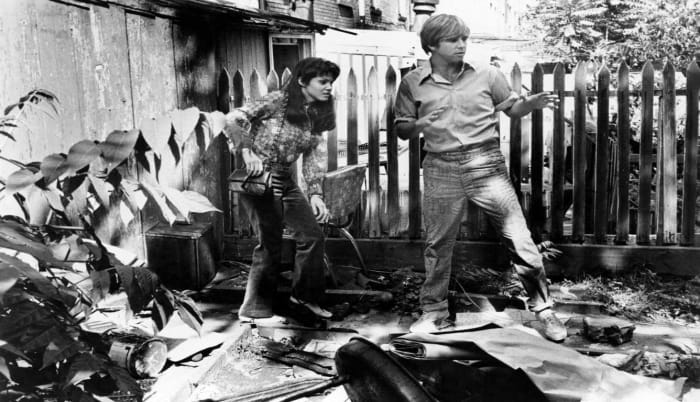
The directorial debut of Hal Ashby, “The Landlord” is a whip-smart comedy about a wealthy young man (Beau Bridges), who, armed with his parents’ money, buys a Park Slope tenement with the aim of evicting the lower-class black residents and living in the building himself. The screenplay by Kristen Hunter and Bill Gunn uses this as the jumping-off point for a perceptive meditation on gentrification and interracial romance. It remains one of the most underrated films of the decade and a fittingly idiosyncratic first movie for Ashby.
"Loving"

If you loved “The Empire Strikes Back," you’ll fall head over heels for “Loving”! Director Irvin Kershner was a versatile filmmaker who could handle a dramedy about a philandering commercial artist with just as much verve as a space epic with AT-AT Walkers and a sage green dwarf who lives in a swamp. Written by Don Devlin (father of “Independence Day” co-scripter, Dean Devlin), “Loving” is a good slice of domestic discontent featuring excellent performances from George Segal, Eva Marie Saint, Sterling Hayden and Keenan Wynn. It’s the kind of adult-skewing entertainment Hollywood used to churn out regularly but now gets relegated to Netflix or Amazon (if it gets made at all).
"A Man Called Horse"

Richard Harris lucked into a franchise with this Western about an English aristocrat who ingratiates himself with the Sioux tribe that has captured him. Harris is having a hammy ball as the Brit who earns the respect and, eventually, admiration of the savages he once loathed. There’s a gnarly initiation sequence in which Harris is hung in the hair with pins hooked into his chest, which made the film a must-watch whenever it turned up on pay cable (which was often). The first sequel, “The Return of a Man Called Horse” (directed by middle-trilogy maestro Irvin Kershner), may be better than the first. The third film, “Triumphs of a Man Called Horse," is eminently skippable.
"The Owl and the Pussycat"

Bill Manhoff’s play gets a superstar reworking thanks to Barbra Streisand playing the role of an aspiring actress who moonlights as a prostitute. George Segal co-stars as her refined, would-be writer flat-mate who disapproves of her lifestyle. It’s a thin premise for a film, but Buck Henry punches up Manhoff’s play with some crackling dialogue, which Streisand and Segal tear into with aplomb. In terms of formulaic big-screen comedies, it’s far superior to that year’s “The Out-of-Towners."
"Performance"

The journey of “Performance” from cult oddity to full-blown classic has been fascinating to observe. Critics at the time were cool if not outright hostile to the film (Time’s Richard Schickel called it “the most completely worthless film I have seen since I began reviewing”), but it is now considered one of the greatest British films ever made. The premise concerns a London mobster (James Fox) shacking up with a rock star (Mick Jagger), but it’s so much more than that. The gifted Donald Cammell (whose “Demon Seed” and “White of the Eye” are essential viewing) wrote the screenplay and co-directed with Nicolas Roeg. It’s a challenging, often disturbing movie, but you can’t take your eyes off it.
"Rio Lobo"

While the New Hollywood brats seized control of the studio system, old-timer Howard Hawks saddled up for one last ride with his second reworking of “Rio Bravo” with screenwriter Leigh Brackett. The film offers zero surprises, but Wayne is in fine form as a Union colonel hellbent on hunting down the traitors who got his best friend killed. The supporting cast ranges from terrific (Jack Elam) to unfortunate (Christopher Mitchum), but if you’re looking for an old-fashioned, non-revisionist Western, “Rio Lobo” delivers.
"Scrooge"

An absolutely delightful musical take on Charles Dickens’ “A Christmas Carol,” it stars Albert Finney as the miserly title character. The Leslie Bricusse numbers are terrific, and director Ronald Neame shaves off the running time fat that helped kill off this genre for decades. Edith Evans and Kenneth More are sensational as, respectively, the Ghosts of Christmas Past and Present, and you can’t beat Alec Guinness as Jacob Marley. But this is Finney’s show, and he might just be the best big-screen Scrooge of them all.
"The Spider's Stratagem"

Just before he made “The Conformist," Bernardo Bertolucci directed this thematic companion piece about a young man who learns the truth of his father’s alleged heroism in a failed plot to kill Benito Mussolini during a performance of the opera “Rigoletto." Cinematographer Vittorio Storaro shoots the film with the same visual sumptuous he brought to their subsequent triumph. Sadly, “The Spider’s Stratagem” has been out of print for years, and there appear to be no plans to make it available any time soon.
"The Vampire Lovers"
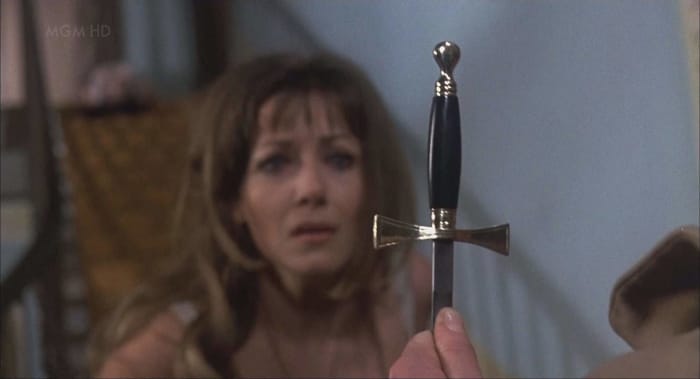
Hammer Films appeared to be running on creative fumes at the start of the decade, but this erotic vampire yarn from the great Roy Ward Baker gave the company a jolt that kept it relevant for at least a few more years. An adaptation of J. Sheridan Le Fanu’s novella “Camilla," “The Vampire Lovers” stars Ingrid Pitt as a female vampire who primarily preys on the flesh of young women. Peter Cushing is along for the ride as a general seeking vengeance for the death of his niece. It’s lurid, sexy and graphically violent — i.e. it’s Hammer doing what Hammer does best.
"The Twelve Chairs"

“I hate people I don’t like.” Mel Brooks dramatically shifted gears from the ribaldry of “The Producers” to this farcical adaptation of Ilf and Petrov’s oft-filmed Russian novel. Brooks feints at classiness, but he lacks the discipline to rein in his zanier instincts, which is just as well. You don’t throw on a Mel Brooks comedy for a few chuckles. Dom DeLuise dominates as a scheming priest who attempts to outmaneuver the protagonist (Ron Moody) in his hunt for a family fortune. It’s not top-shelf Brooks, but it’s more consistently funny than “High Anxiety” or “Silent Movie."
"Valerie and Her Week of Wonders"

This is a visual marvel from Czechoslovakian filmmaker Jaromil Jireš, whose promising career was likely stymied by his decision to remain in country rather than flee the oppressive regime like his contemporaries, Miloš Forman and Ivan Passer. The avant-garde movie centers on a teenage girl contending with a variety of surreal horrors that play like a nightmare induction into young womanhood. Jireš places us in his protagonist’s shoes and leaves us to make sense of the befuddling yet entrancing imagery. It’s amazing that we got this and “El Topo” in the same year. Talk about a sign of the times.
"The Private Life of Sherlock Holmes"

Billy Wilder and I.A.L. Diamond weren’t hitting on all cylinders with this lightly revisionist take on the deductive genius and his faithful companion. Robert Stephens and Colin Blakely make for a nifty Holmes and Watson, while Christopher Lee is a gas as Sherlock’s haughty brother, Mycroft. The film was drastically truncated by the studio, but Wilder was mostly unhappy with his timidity in exploring Holmes’ homosexuality. There was a much more interesting film to be made, but what’s here deserves more respect than it gets.
"Zabriskie Point"

A commercial and critical disaster 50 years ago, Michelangelo Antonioni’s counterculture drama…is still emotionally inert, but, dear god, the director’s widescreen compositions are majestic. Is it the kind of film that works better under the influence? Absolutely. But one needn’t be stoned out of their gourd to appreciate the film’s desert-set scope or its bonkers finale. There’s also some great music from Pink Floyd, Roy Orbison, the Rolling Stones and the Grateful Dead. Like most ambitious failures from great directors, you owe it to yourself to see it at least once. Big. And loud.
Jeremy Smith is a freelance entertainment writer and the author of "George Clooney: Anatomy of an Actor". His second book, "When It Was Cool", is due out in 2021.
More must-reads:
- The 25 best movies and TV shows about the Middle Ages
- Albums turning 50 in 2020 that everyone should listen to
- 23 films that were overlooked because of Barbenheimer
Trending in Entertainment
Customize Your Newsletter
 +
+
Get the latest news and rumors, customized to your favorite sports and teams. Emailed daily. Always free!
Use of this website (including any and all parts and
components) constitutes your acceptance of these
Terms of Service and Privacy Policy.

